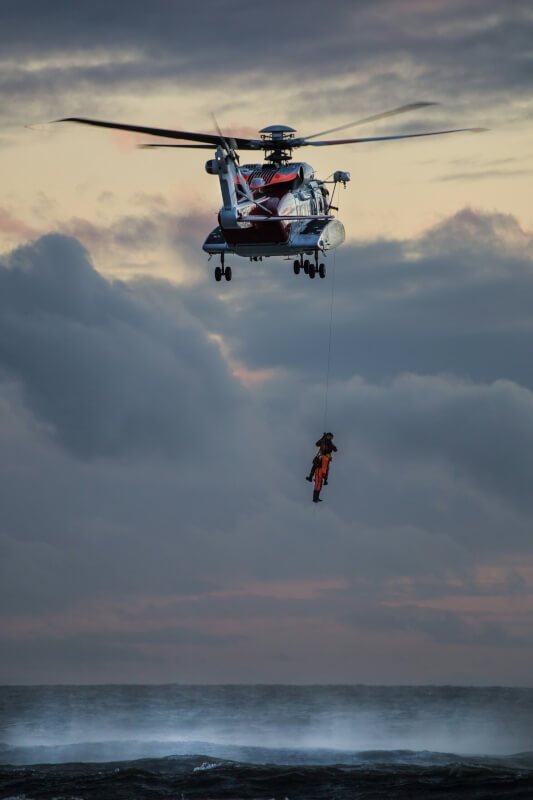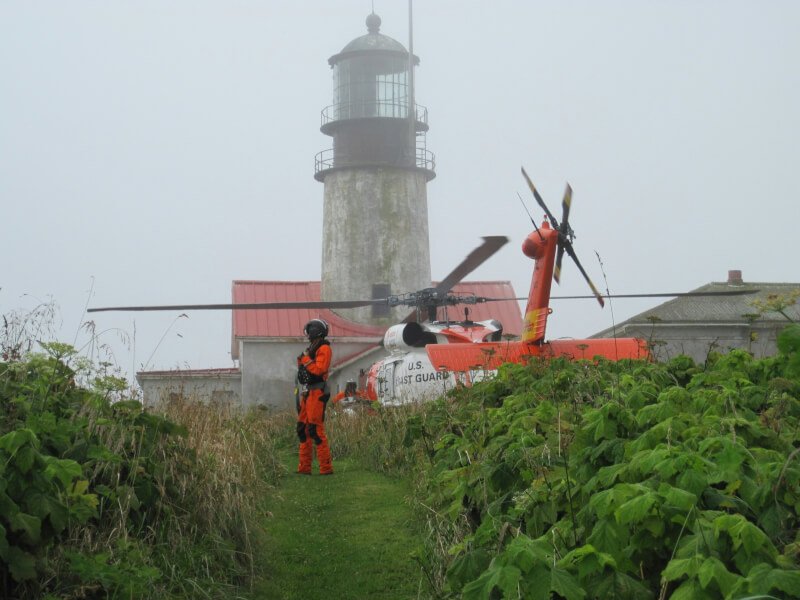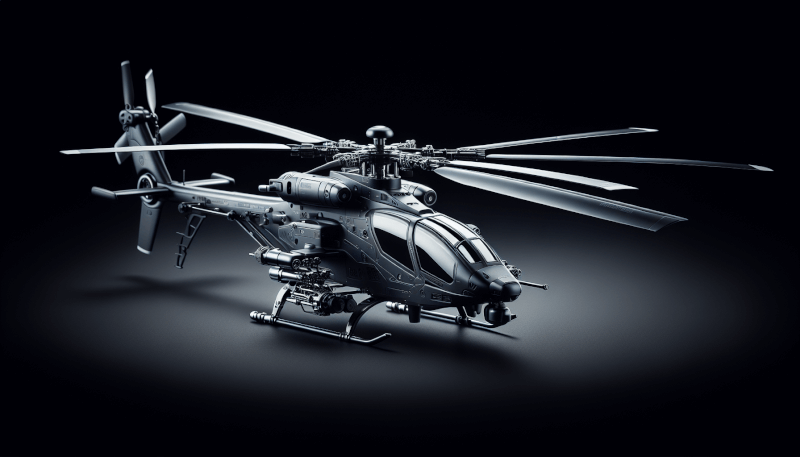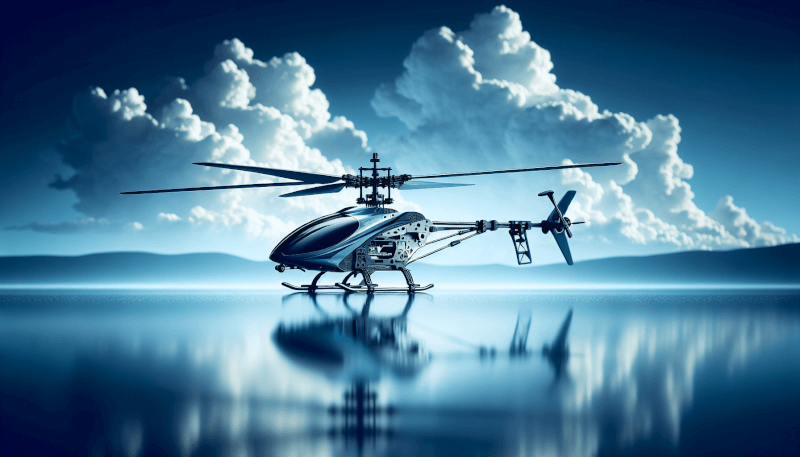Thinking about buying an RC helicopter but not sure where to start? Look no further! “The Complete RC Helicopter Buying Guide” is here to help you navigate the world of remote control helicopters. Whether you’re a beginner looking for your first helicopter or an experienced flyer searching for an upgrade, this guide has you covered. From understanding different types and features to learning about the best brands and models, this article provides all the information you need to make an informed decision. Get ready to take to the skies with confidence and soar into the exhilarating hobby of RC helicopters.
Choosing the Right Type of RC Helicopter
Understanding the Different Types of RC Helicopters
When it comes to choosing the right type of RC helicopter, it’s important to understand the different options available. The four main types of RC helicopters are: coaxial, fixed-pitch, collective-pitch, and quadcopters.
Coaxial helicopters are often recommended for beginners as they offer increased stability and easier control. These helicopters have two sets of main rotor blades that spin in opposite directions, canceling out the torque effect and making them easier to fly.
Fixed-pitch helicopters are another popular choice for beginners. Unlike coaxial helicopters, fixed-pitch models have only one set of main rotor blades, making them simpler in design. They offer more maneuverability and are a great introduction to RC helicopter flying.
Collective-pitch helicopters are more advanced and offer a higher level of control and maneuverability. They have adjustable blade angles, allowing for more complex flight maneuvers such as inverted flight and aerobatics.
Quadcopters, also known as quadrotors, have become increasingly popular in recent years. They feature four rotors arranged in a square configuration and are known for their stability and agility. Quadcopters are often used for aerial photography and videography.
Considerations for Choosing the Type of RC Helicopter
When choosing the right type of RC helicopter, there are several factors to consider. The most important considerations include your skill level, the intended use of the helicopter, and your personal preferences.
If you’re a beginner, it’s generally recommended to start with a coaxial or fixed-pitch helicopter. These types of helicopters offer a more forgiving flight experience and are easier to learn to control. As you gain more experience and confidence, you can move on to more advanced models like collective-pitch helicopters.
The intended use of the helicopter is another crucial factor. Are you looking for a helicopter for indoor or outdoor flying? Will you be using it for aerial photography or just for recreational flying? Different types of helicopters excel in different environments and have unique capabilities, so it’s important to choose one that suits your specific needs.
Personal preferences, such as the design and appearance of the helicopter, also play a role in the decision-making process. Some people prefer scale models that resemble real helicopters, while others are more interested in aerobatic performance. Take the time to explore different models and find one that resonates with you.
Important Features to Look for
Size and Weight
The size and weight of an RC helicopter can significantly impact its performance and flight characteristics. Smaller helicopters are generally more maneuverable and suitable for indoor flying, while larger models offer more stability and payload capacity for outdoor use.
When considering the size and weight, also think about how portable you need the helicopter to be. If you plan on taking it to different locations or traveling with it, a smaller and lightweight model may be more convenient.
Flight Time and Battery Life
Flight time and battery life are essential factors to consider, especially if you plan on flying for extended periods. The flight time of an RC helicopter refers to the duration it can stay in the air on a single battery charge. Battery life, on the other hand, refers to the overall lifespan and durability of the batteries used.
It’s important to note that larger helicopters tend to have longer flight times due to their increased capacity for larger batteries. However, flight time can also be influenced by other factors like the helicopter’s weight and flying style.
Consider your flying preferences and how long you anticipate each flight to last. If you plan on flying for prolonged periods, look for helicopters with longer flight times and durable batteries. Additionally, consider the availability and cost of spare batteries, as having extras can prolong your flying sessions.
Control Range
The control range of an RC helicopter determines how far away you can fly the helicopter while maintaining control. This range is typically indicated by the manufacturer and may vary depending on the helicopter’s quality and the type of transmitter used.
For beginners or those planning to fly in smaller areas, a shorter control range may be sufficient. However, if you have more experience or are interested in long-range flights, look for helicopters with a longer control range.
Keep in mind that the control range can be affected by factors such as interference and obstacles, so it’s essential to choose a helicopter with a control range that suits your needs and flying environment.
Stability and Maneuverability
The stability and maneuverability of an RC helicopter are crucial for both beginners and experienced pilots. Stable helicopters are easier to control and can help you learn the basics of flying before progressing to more challenging maneuvers.
When considering stability, look for helicopters with built-in gyroscopic stabilization systems. These systems help counteract external forces and keep the helicopter level during flight, enhancing stability and control.
Maneuverability is also important, especially if you’re interested in more advanced flying techniques like aerobatics and stunts. Helicopters with high maneuverability allow for quick and precise movements, making them suitable for pilots who want to push their skills to the next level.
Built-in Gyroscopic Stabilization
Gyroscopic stabilization plays a crucial role in the stability of an RC helicopter. Gyroscopes are devices that sense changes in the helicopter’s orientation and make adjustments to counteract those changes.
For beginners, helicopters with built-in gyroscopic stabilization are highly recommended. These systems help maintain the helicopter’s stability, making it easier to hover, fly straight, and perform basic maneuvers.
More advanced pilots may prefer helicopters with adjustable gyroscopic stabilization systems. These systems can be fine-tuned to suit your flying style and can enhance your control over the helicopter.
Transmitter Functions
The transmitter, also known as the controller, is your primary interface with the RC helicopter. It’s essential to choose a transmitter that offers the functions and features you need for an enjoyable flying experience.
Basic transmitters may have limited functions, while more advanced ones offer greater control and customization options. Consider the number of channels the transmitter has, as it determines the number of control functions available.
Additionally, some transmitters offer features like programmable settings, dual rates, and exponential adjustments. These features can be beneficial for pilots who want to customize their flying experience and fine-tune the helicopter’s response.
Spare Parts Availability
Accidents happen, and it’s inevitable that your RC helicopter may suffer occasional crashes or damage. That’s why the availability of spare parts is an important consideration.
Before purchasing a specific model, check the availability of spare parts for that particular helicopter. It’s helpful to choose a popular brand or model with a wide range of spare parts available for easy replacement. This ensures that you can quickly get back in the air after an incident without having to wait for parts to be shipped.

Considerations for Beginners
Choosing an Easy-to-Fly Model
For beginners, the learning curve associated with flying an RC helicopter can be steep. To make the learning process more enjoyable and less frustrating, it’s crucial to choose an easy-to-fly model.
Coaxial and fixed-pitch helicopters are often recommended for beginners due to their stability and forgiving flight characteristics. These models offer a gentle learning curve, allowing you to gradually develop your piloting skills.
When choosing an easy-to-fly model, look for features such as self-leveling and altitude hold. These features can help maintain stability and assist in maintaining a controlled flight. Models with headless mode are also beneficial for beginners as they eliminate the need to worry about the orientation of the helicopter.
Integrated Flight Training Systems
Some RC helicopters come with integrated flight training systems that assist beginners in learning to fly. These training systems can include features like flight simulators or training modes that limit the helicopter’s movements.
Flight simulators are particularly useful for beginners as they provide a safe and controlled environment to practice flying. They allow you to get the hang of the controls and become familiar with the helicopter’s response without the risk of crashing or damaging the aircraft.
If you’re a beginner, choosing a helicopter with an integrated flight training system can greatly expedite your learning process and build your confidence as a pilot.
Safety Features
Safety should always be a top priority when flying RC helicopters. Fortunately, many models come with built-in safety features that enhance the overall flying experience and reduce the risk of accidents.
One common safety feature is an emergency stop or panic button. This feature allows you to quickly halt the helicopter’s movements in case of an emergency or loss of control. It can be especially useful for beginners who may find themselves in challenging situations and need to regain control quickly.
Other safety features to consider include low-voltage protection and rotor blade guards. Low-voltage protection helps prevent over-discharging the battery, which can lead to damage and decreased flight performance. Rotor blade guards, on the other hand, help protect the blades from damage during crashes and collisions.
When choosing a helicopter, prioritize models that have safety features that align with your needs and flying environment. These features can greatly enhance your overall flying experience and promote safer operations.
Advanced Features and Upgrades
Brushless Motors
Brushless motors are a popular advanced feature found in high-end RC helicopters. Unlike brushed motors, which use physical brushes to transmit power, brushless motors are more efficient and have a longer lifespan.
One of the main advantages of brushless motors is their ability to deliver more power and torque. This translates to increased performance, faster speeds, and improved aerobatic capabilities. Brushless motors are also quieter and generate less heat, making them more reliable and durable in the long run.
While brushless motors may come at a higher cost, they offer significant performance enhancements and are worth considering for advanced pilots who demand top-notch performance from their helicopters.
3D Flight Capability
For those interested in pushing the boundaries of RC helicopter flying, 3D flight capability is a must-have feature. 3D flight refers to the ability of a helicopter to perform complex maneuvers and aerobatics, including flips, rolls, loops, and inverted flight.
Helicopters with 3D flight capability typically have collective-pitch rotor systems and advanced gyroscopic stabilization. These features allow for precise control over the helicopter’s movement, enabling a wide range of acrobatic maneuvers.
If you enjoy pushing your piloting skills to the limit and want to explore the thrilling world of aerobatics, look for helicopters specifically designed for 3D flight.
Collective Pitch Control
Collective pitch control is a feature typically found in more advanced RC helicopters. It refers to the ability to adjust the angle of all the main rotor blades together, which affects the helicopter’s lift. By adjusting the collective pitch, pilots can control the altitude and climb rate of the helicopter.
Collective pitch control enables advanced flying techniques such as inverted flight and autorotation. It requires more skill and precision than fixed-pitch helicopters but offers greater maneuverability and agility.
If you’re an experienced pilot looking to expand your skill set, helicopters with collective pitch control are worth considering. They provide a greater level of control and allow for more advanced flying techniques.
Flybarless Design
Flybarless helicopters are another advanced feature to consider for experienced pilots. In traditional helicopters, a flybar was used to stabilize the helicopter during flight. However, flybarless helicopters eliminate the need for a flybar and rely solely on gyroscopic stabilization systems.
The flybarless design offers several advantages, including increased agility, improved durability, and reduced complexity. Without the flybar, flybarless helicopters can perform faster and more agile maneuvers. They’re also generally more responsive to control inputs, providing a more engaging and dynamic flying experience.
While flybarless helicopters are typically more expensive than their flybar counterparts, the enhanced performance and increased maneuverability make them a favorite among advanced pilots.
LED Lights and Visual Effects
While not essential for flight performance, LED lights and visual effects can add a touch of excitement and aesthetics to your RC helicopter. Many modern helicopters come equipped with built-in LED lights that enhance visibility during low-light conditions or night flying.
LED lights can serve both functional and decorative purposes. They can help you locate your helicopter easily, especially when flying at a distance or in dimly lit environments. Additionally, LED lights come in various colors and can be programmed to flash, strobe, or create captivating visual effects.
If you’re looking to add a bit of flair to your RC helicopter and enhance its visual appeal, consider models with built-in LED lights and customizable visual effects.

Choosing the Right Size
Micro RC Helicopters
Micro RC helicopters are the smallest and most portable type of RC helicopters available. They typically have a rotor diameter of less than 150mm and are designed for indoor flying or light outdoor use.
Micro helicopters are a great option for those with limited space or who live in urban areas with few outdoor flying opportunities. They are highly maneuverable and can perform quick and agile maneuvers, making them ideal for pilots who enjoy flying in tight spaces.
Due to their small size and lightweight construction, micro helicopters are generally less stable and more susceptible to wind and turbulence. However, they provide an excellent platform for beginners to learn the basics of RC helicopter flying and can be a lot of fun for experienced pilots as well.
Mini RC Helicopters
Mini RC helicopters are slightly larger than micro helicopters and offer a good balance between portability and stability. They typically have a rotor diameter between 150mm and 250mm and can be flown both indoors and outdoors, depending on the weather conditions.
Mini helicopters are a popular choice for both beginners and experienced pilots looking for a versatile and portable option. They have improved stability compared to micro helicopters and can handle light winds or outdoor environments better.
With their increased size and weight, mini helicopters also tend to have longer flight times and more robust construction. This makes them more suitable for recreational flying and allows for more advanced features like additional control channels.
Medium and Large RC Helicopters
Medium and large RC helicopters are designed for outdoor flying and can handle a wider range of conditions. With rotor diameters ranging from 250mm to over 800mm, these helicopters offer increased stability, payload capacity, and flight performance.
Medium and large helicopters are typically powered by more powerful motors and can achieve faster speeds and more precise control. They are suitable for pilots with intermediate to advanced flying skills and are commonly used for aerial photography, videography, and aerobatics.
Due to their larger size and increased weight, medium and large helicopters are usually more expensive and require more setup and maintenance. However, their capabilities and performance make them a favorite among experienced pilots looking for a thrilling and rewarding flying experience.
Budget Considerations
Entry-level Models
Entry-level RC helicopters are perfect for beginners or those on a budget. These models offer a great starting point for learning to fly and come at a more affordable price point.
Entry-level helicopters are often coaxial or fixed-pitch models designed for stability and ease of control. They typically have simpler features and fewer customization options but provide an excellent platform for learning the basics of RC helicopter flying.
While entry-level models may lack some of the advanced features found in higher-end helicopters, they still offer an enjoyable flying experience and are a great way to enter the world of RC helicopters without breaking the bank.
Mid-range Models
Mid-range RC helicopters offer a balance between affordability and advanced features. These models are suitable for pilots who have some flying experience and want to upgrade to helicopters with enhanced performance and capabilities.
Mid-range models often feature collective-pitch rotor systems, advanced stabilization systems, and additional customization options. They provide a bridge between entry-level models and high-end helicopters, offering a significant step up in terms of flight performance and maneuverability.
While mid-range models may come at a higher price compared to entry-level models, they often offer excellent value for money and are a popular choice among pilots looking for a more advanced flying experience.
High-end Models
High-end RC helicopters are designed for experienced pilots or those who demand the best performance and features. These models are typically more expensive but offer top-notch quality, unparalleled flight performance, and advanced customization options.
High-end helicopters often come equipped with brushless motors, 3D flight capability, flybarless designs, and advanced gyroscopic stabilization systems. They deliver exceptional power, speed, and maneuverability, allowing pilots to perform complex aerobatics and push the limits of RC helicopter flying.
While high-end models may not be necessary for beginners or casual hobbyists, they are a worthy investment for dedicated enthusiasts or professionals who require the highest level of performance and durability.

Researching and Comparing RC Helicopter Brands
Popular RC Helicopter Brands
When it comes to RC helicopters, several brands have established themselves as industry leaders. These brands have a proven track record of producing high-quality helicopters and have built a reputation for reliability and performance.
Some of the popular RC helicopter brands include Blade, Align, SYMA, WLtoys, and E-flite. These brands offer a wide range of models suitable for beginners, intermediate pilots, and advanced enthusiasts.
It’s important to research and compare the different brands to find the one that best suits your needs and preferences. Consider factors such as the brand’s reputation, customer reviews, and the availability of spare parts and customer support.
Customer Reviews and Ratings
Customer reviews and ratings are valuable resources when researching and comparing RC helicopter models. Reading reviews from other pilots who have experience with a particular helicopter can provide insights into its flight performance, durability, and overall user satisfaction.
Websites and forums dedicated to RC helicopters often feature comprehensive reviews and discussions about different models. Take the time to read through these reviews and consider the feedback from experienced pilots.
When looking at customer ratings, pay attention to both positive and negative feedback. This will give you a more balanced perspective and help you make an informed decision.
Warranty and Customer Support
A reliable warranty and good customer support are crucial factors to consider when purchasing an RC helicopter. While no one wants to encounter problems or malfunctions with their helicopter, it’s important to be prepared in case any issues arise.
Look for brands that offer a warranty period for their helicopters. A warranty demonstrates the manufacturer’s confidence in their product and provides peace of mind knowing that you’re protected if something goes wrong.
Additionally, consider the customer support offered by the brand. Do they have responsive and helpful customer service representatives? Can they provide technical assistance or troubleshooting advice? A brand with reliable customer support can provide valuable assistance if you encounter any difficulties during the setup or operation of your RC helicopter.
Where to Buy RC Helicopters
Physical Stores
Physical stores dedicated to RC hobbies and models are excellent places to purchase RC helicopters. These specialty stores often have knowledgeable staff who can provide expert advice and guidance, especially for beginners.
Visiting a physical store allows you to see and inspect the helicopters firsthand before making a purchase. You can also ask questions and get recommendations based on your needs and budget.
Additionally, physical stores may have spare parts and accessories readily available, allowing you to quickly replace any damaged components. This can be a significant advantage, especially if you need replacements urgently or prefer to see the parts in person before purchasing.
Online Retailers
Online retailers provide a convenient and wide range of options for purchasing RC helicopters. Websites like Amazon, eBay, and specialized RC hobby stores offer extensive selections that can be easily compared and reviewed.
Shopping online allows you to browse through different models and read customer reviews from the comfort of your home. Online retailers often provide comprehensive product descriptions and specifications, making it easier to compare different helicopters and make an informed decision.
When purchasing online, be sure to check the seller’s reputation and reviews to ensure a positive buying experience. Consider factors such as shipping costs, return policies, and possible warranty coverage.
Secondhand Market
The secondhand market can be a great option for finding RC helicopters at a lower cost. Websites like Craigslist, eBay, and RC enthusiast forums often have listings for used helicopters that are still in good condition.
When buying from the secondhand market, exercise caution and thoroughly research the seller’s reputation and the condition of the helicopter. Ask the seller for detailed information about the helicopter’s history, flight hours, and any previous accidents or repairs.
Inspecting the helicopter in person before purchasing is ideal but may not always be possible. If buying remotely, ask for detailed photos and videos of the helicopter to ensure that it matches the seller’s description.
It’s important to note that buying secondhand may come with risks, such as potential hidden damage or missing parts. However, if you’re willing to take the time to research and evaluate the helicopter, the secondhand market can be an excellent way to save money and find a quality RC helicopter.

Safety Precautions and Regulations
Flying in Designated Areas
When flying your RC helicopter, it’s crucial to do so in designated areas and follow local regulations. Many countries and municipalities have specific rules and guidelines for RC aircraft operation, including helicopters.
Research the local laws and restrictions regarding RC helicopter flying in your area. Ensure that you fly in approved locations and adhere to any height, distance, or privacy restrictions. Ignoring these rules can lead to fines, confiscation of your helicopter, or even legal consequences.
Additionally, always respect the privacy and property of others when flying your helicopter. Maintain a safe distance from people and objects to minimize the risk of accidents or damage.
Registering with Local Aviation Authorities
In some countries, it may be necessary to register your RC helicopter with local aviation authorities. This is often the case for helicopters that exceed a certain weight limit or are equipped with specific features like cameras or transmitters.
Check with your local aviation authority to determine if registration is required for your helicopter. Failure to comply with registration requirements can result in penalties or restrictions on flying.
Registering your helicopter also often comes with benefits such as access to designated flight areas and the ability to join local RC clubs or organizations. These communities provide additional support, resources, and opportunities for flying and networking with other enthusiasts.
Obeying Local Laws and Restrictions
In addition to regulations specific to RC helicopters, it’s important to adhere to general aviation laws and restrictions. These laws, such as not flying near airports or military installations, are in place to ensure the safety of both manned and unmanned aircraft.
Take the time to educate yourself about the relevant laws and restrictions in your area. Treat your RC helicopter as you would any other aircraft and fly responsibly and respectfully.
Maintenance and Care Tips
Cleaning and Storage
Proper cleaning and storage are essential for maintaining the performance and longevity of your RC helicopter. After each flight session, take the time to clean any dirt or debris off the helicopter, paying particular attention to the rotor blades and moving parts.
Use a soft brush or compressed air to remove any dust or debris from the helicopter’s exterior and components. Be careful not to use excessive force or harsh cleaning agents, as this can damage delicate components.
When storing your helicopter, ensure that it is in a cool, dry, and dust-free environment. Avoid exposing the helicopter to extreme temperatures or humidity, as these can lead to damage or corrosion. It’s also a good idea to remove the battery before storing the helicopter for extended periods to avoid any potential issues.
Regular Maintenance
Regular maintenance is essential for keeping your RC helicopter in optimal condition. This includes inspecting and lubricating moving parts, checking the battery’s health, and ensuring all components are secure and well-maintained.
Inspect the rotor blades for any signs of wear or damage and replace them if necessary. Additionally, check the gears, servos, and other mechanical components for any signs of wear or misalignment. Lubricate these moving parts as recommended by the manufacturer to prevent friction and ensure smooth operation.
Regularly check the battery for any signs of swelling, damage, or decreased performance. Replace the battery if it is no longer holding a charge or if you notice any abnormalities.
Lastly, always refer to the manufacturer’s maintenance and care instructions for specific guidance on your helicopter model. Following these guidelines will help extend the life of your helicopter and ensure safe and enjoyable flying experiences.
Replacing Parts
Despite your best efforts, there may come a time when certain parts of your RC helicopter need to be replaced. Wear and tear, crashes, or accidents can all cause damage to various components.
Having spare parts readily available is crucial for keeping your helicopter in the air and minimizing downtime. Purchase spare parts that are commonly prone to damage or wear, such as rotor blades, gears, and landing skids. It’s also a good idea to have spare batteries on hand to extend your flight time.
When replacing parts, follow the manufacturer’s instructions and recommendations. Take your time and ensure that all components are properly installed and secured. If you’re unsure about any aspects of the replacement process, seek advice from experienced pilots or consult with the manufacturer’s customer support.
By regularly inspecting and replacing worn or damaged parts, you can keep your RC helicopter in excellent condition and maximize its performance and longevity.
In conclusion, choosing the right type of RC helicopter involves understanding the different types available and considering factors such as size, flight time, stability, and maneuverability. Beginners should focus on easy-to-fly models with integrated flight training systems and safety features. Advanced pilots may be interested in features like brushless motors, 3D flight capability, and collective pitch control. Consider your budget, research and compare different brands, and choose the right size helicopter for your needs. Explore different purchasing options such as physical stores, online retailers, or the secondhand market. Always prioritize safety, adhere to local regulations, and maintain your RC helicopter properly for optimal performance and enjoyment.



